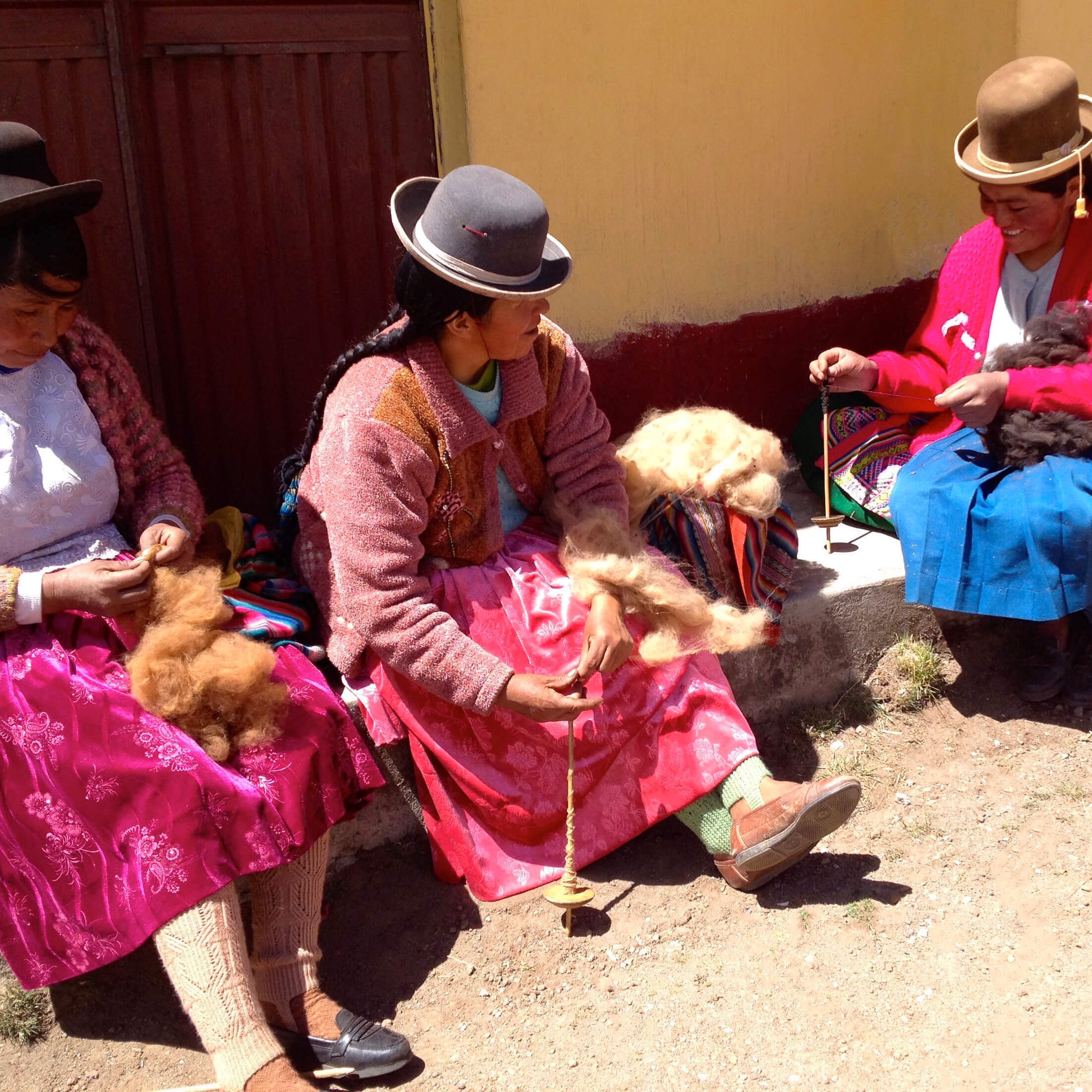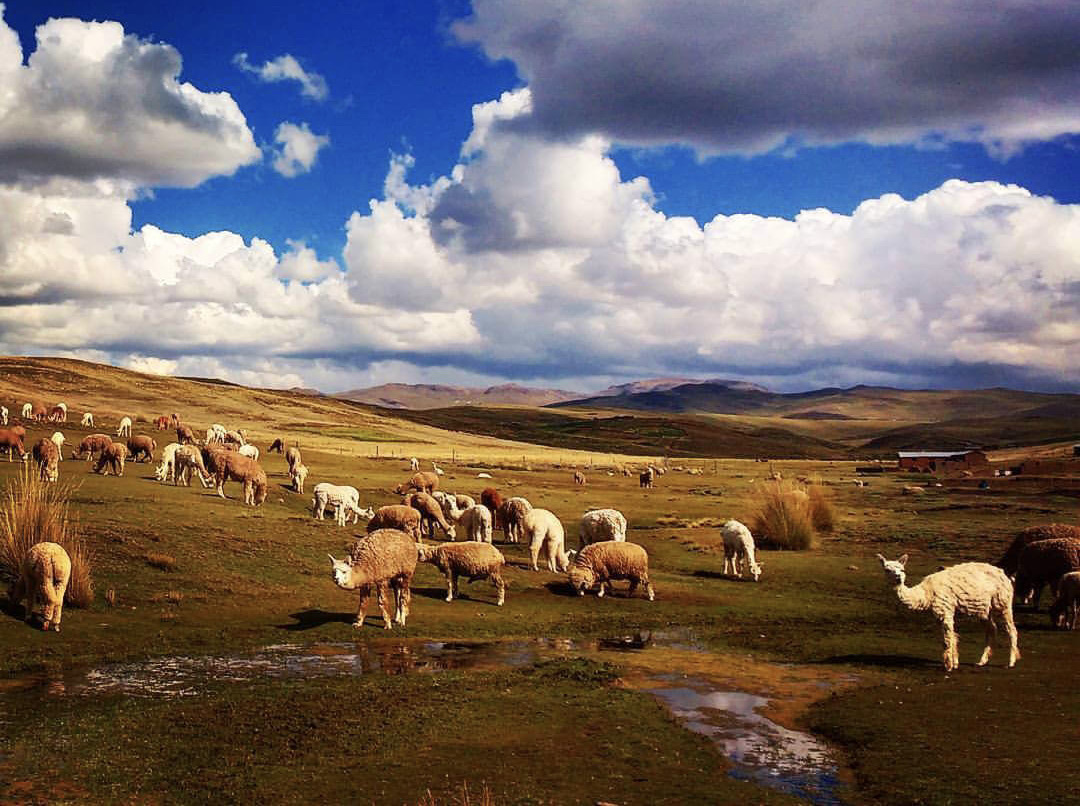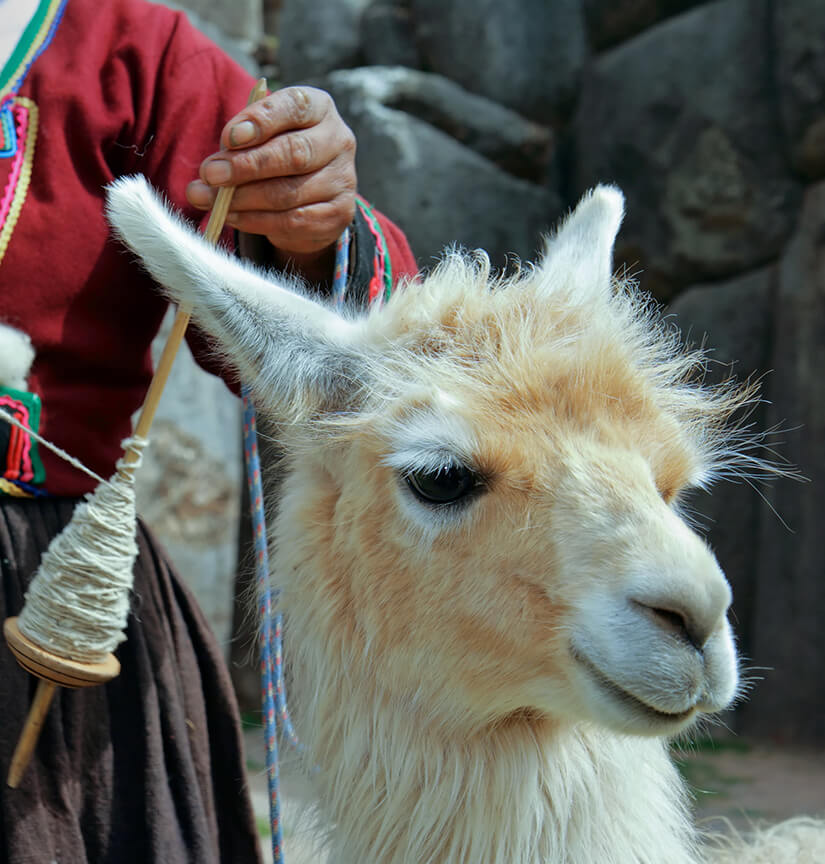
Project Overview and Background
This project is a collaboration between The Chijnaya Foundation, its Peruvian counterpart organization Pro-DIA, and Asociación Wichay. Asociación Wichay is an association of alpaca herders from 5 communities in the Puno region of Peru who are working to develop a sustainable hand-spun yarn business to create more viable economic opportunities within their traditional activities of alpaca herding. We are collaborating with this association to implement a project to protect and restore bofedales, the high-altitude wetlands that make alpaca herding possible, and that are disappearing due to climate change and economic pressure.
The Chijnaya Foundation and Pro-DIA have supported various economic development-focused projects in the individual communities that make up Asociación Wichay. Projects addressed communities’ immediate needs to increase and improve fur production as a way to increase income and have included building mobile animal sheds to decrease herd mortality rates and investing in pure-bred alpacas to improve herd genetics and fur production. Currently, alpaca herders in these communities are selling unprocessed alpaca fur to third parties for about $6 per kilogram of fur and are often experiencing extreme levels of poverty.
The 5 communities in this project formed Asociación Wichay with the goal of developing a local hand spun yarn business because yarn can be sold at ten times the price of unprocessed fur. Asociación Wichay has worked on a few small projects to obtain training on best practices for fur preparation and yarn quality. In 2022, the association will focus on the restoration and protection of bofedales. This project is a key aspect of their multiyear plan to create a yarn business because alpaca herding, and these communities, cannot sustainably exist without bofedales.

Bofedales are a type of wetland found in the Andes of Peru and Chile at elevations above 12,500 ft above sea level. They form in flat areas, often near ponds or streams, and can be natural or man-made. Bofedales absorb the limited amount of water available in high altitude communities from snow, glacial melt, and rain showers and slowly release this water throughout the year. They normally have peat in their soil and vegetation year-round due to the humidity of the soil. These wetlands are a fundamental part of high-altitude environments in the Andes because they help regulate water levels in nearby aquifers, provide water for both animal and human consumption, and provide grazing pasture for livestock. In recent years communities have noted that bofedales are beginning to disappear due to reduced water supplies caused by climate change and overgrazing caused by economic pressure.

The two main threats to bofedales that this project seeks to address are climate change and overgrazing. Temperatures in the Andean region have increased by approximately 0.1 degC per decade for the past 70 years, causing Andean tropical glaciers to recede at accelerating rates and directly affecting the water supply of many communities. Studies estimate that this warming will continue to increase by 4.5-5 degC before the end of the century (Vuille, 2013). Receding glaciers and changes in weather patterns have had a drastic effect on Andean communities and the 5 communities involved in this project have perceived a decrease in their water supplies.
Overgrazing is another leading cause of bofedal degradation and is exacerbating the effects of climate change. Overgrazing reduces the vegetation cover of bofedales leading to increased runoff and therefore a decrease in infiltration and groundwater recharge. Many people struggle to make a living solely from alpaca herding, so in recent years they have purchased other animals, such as sheep, to increase their income. The introduction of different animals into these regions has led to overgrazing and is contributing to the disappearance of these high wetland areas that are already experiencing changes in water levels due to the effects of climate change.
PROJECT OBJECTIVES
This project aims to train 80 people on methods to recuperate and protect bofedales, design and implement 5 individualized action plans, and plant 40 hectares of native grasses. The long-term goals of this project are to increase the water flow of 40 natural springs, recuperate and protect 40 hectares of bofedales, and help communities develop the knowledge and resources they need to properly manage their bofedales and overcome future threats to the landscape.
PROJECT PLAN
In May, a local expert was contracted to work with Asociación Wichay to evaluate and measure baseline data for the bofedales in each community. They will then work with each community to facilitate community problem solving, provide training sessions where necessary, and help each community within the association create and implement a personalized plan to recuperate, protect, and manage their bofedales based on local knowledge and other proven strategies.
Since overgrazing has had a huge negative effect on bofedales, one strategy for recuperation will be to plant native grasses in and around bofedales to improve water infiltration. Wire paddock fences will them be used to protect areas of the bofedales from overgrazing. Another strategy for recuperation will be to use the pre-colonial practice of cosecha de agua, or harvesting water, and dig canals, berms, and swales to strategically direct water to bofedales and maximize water infiltration and water flow to natural spring.

The disappearance of bofedales has become a critical and more well-known challenge in recent years. National Geographic recently wrote about the disappearance of bofedales and community-led efforts to protect and restore these landscapes in this article.
The first phase of this project has been funded through grants and generous donations from many of you. Your contributions support future projects of Asociación Wichay and other community-led projects in the altiplano. We are deeply grateful for your support and solidarity. Did you know about 80% of our project funding comes from individual donations? We mean it when we say this work would not be possible without you and your support is truly changing peoples’ lives.

